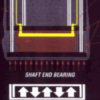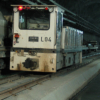Overview
When Portland’s first sewage treatment plant was built in 1952, engineers left pipes in place to allow overflows directly into the river, acting as a safety valve for the sewer system. Without the overflows, during rainy weather sewage would back up into basements and onto streets. Prior to the treatment plant, raw sewage was dumped directly into the river causing the river to become dangerously contaminated. As the population of Portland grew, so did its sewage volume. Storm-water runoff has also increased in volume as land has been paved over for development.
The City of Portland determined that construction of two collection tunnels terminating at a pumping station would allow for diverting most of the overflow to a nearby wastewater treatment plant. Two huge tunnels will carry sewage and stormwater to the Swan Island Pump Station. From there, the combined sewage will be pumped to the Columbia Boulevard Wastewater Treatment Plant.
The Challenge
When up and running in 2011, these two enormous tunnels, pipelines, and the pump station will reduce the volume of combined sewage entering the river by 94 percent— making the Willamette River cleaner for future generations.
The West Side Big Pipe is a 4.3-meter (14-foot) diameter, 5.5- kilometer (3.5-mile) tunnel on the river’s west side. Construction is under way with expected completion in 2006.
On the east side of the river, the CSO tunnel will run about 10 kilometers (6 miles) and is 6.4 to 6.7 meters (21 to 22 feet) in diameter. Construction will start in 2006 and be completed in 2011.
Altogether these tunnels require about a dozen major shafts, each at least 12 meters (39 feet) in diameter and more than 36 meters (120 feet) deep. And one massive 41-meter (135-foot) diameter and 49-meter (160-foot) deep shaft is required for the Swan Island Pump Station.
The Swan Island Pump Station shaft presented numerous construction challenges, not the least of which it’s proximity to the river and hence the de-stabilizing effect of the high ground water table. To address these challenges the design of the shaft consists of a slurry wall incorporated into the shaft’s final lining, this allows for excavation of the shaft with minimal pumping.
What We Did
To monitor the integrity of the slurry wall and shaft during excavation a series of piezometers were installed inside and outside the slurry wall support system (a picture of the partially excavated shaft is shown at right). Monitoring of pore pressures during excavation provided a way to determine the extent and location of any leakage due to inconsistencies in the slurry wall support system.
We were tasked with the following work:
• Design and supply of the data acquisition system (shown below at right) to monitor up to 80 of the piezometers, this included a MultiLogger System with (5) of our lightning protection equipped MultiMux multiplexers, VWDSP interface and CR10X Control Module. The multiplexers were configured for “DaisyMux” operation, in this case 2 cables were run along each side of the shaft to wire into the existing junction boxes where the piezometer cables terminated, one cable had 2 multiplexers connected in series along the cable, the other cable had 3 multiplexers in series.
• Installation of the data acquisition system, including training of Contractor personnel in the use of the system and software.
• Installation of our MultiLoggerDB software to provide for local management of the data acquisition system, automated collection of data and data access, using our Insite software, to key Contractor personnel at the project site, in addition to personnel for the City of Portland.


